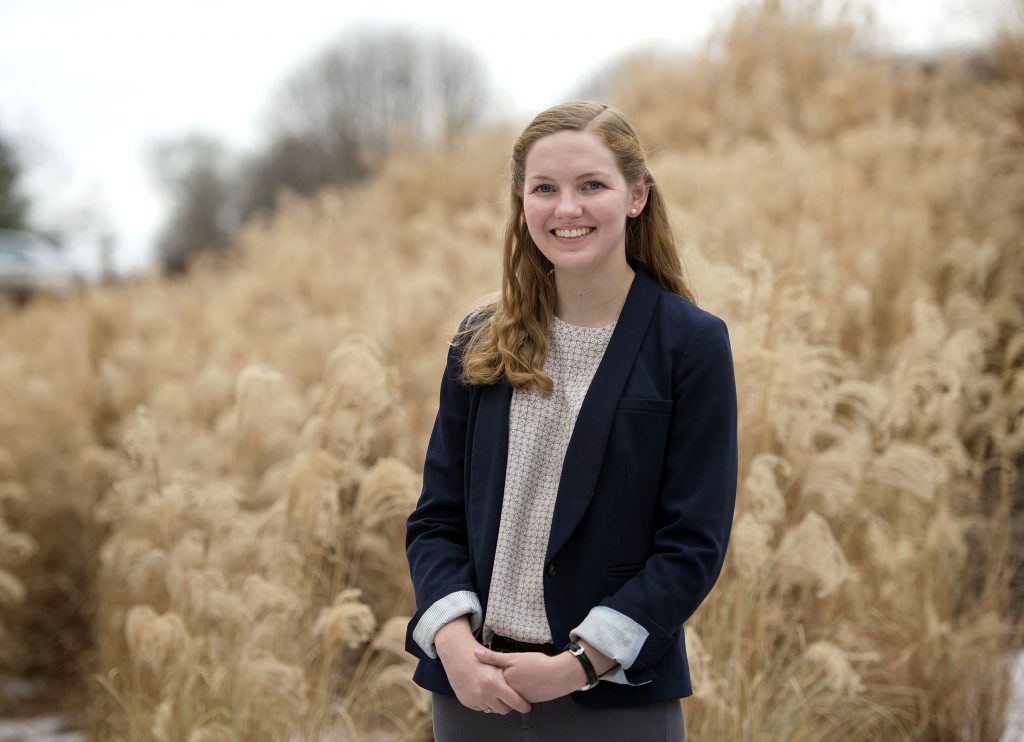
A doctoral student’s innovative design project is helping the North Carolina town of Beaufort keep a check on water quality issues in creeks and streams using inexpensive monitoring stations. The health of North Carolina’s coastal watersheds are essential for industries like tourism and fishing.
Adam Gold’s lab space resembles more of a garage workbench than a water research facility. Drills, screwdrivers, soldering irons and circuit boards cover the countertops. Gold, an Institute of Marine Sciences (IMS) Ph.D. student in the Environment, Ecology and Energy program (E3P), is designing and building water quality monitoring stations to continuously measure creeks in eastern North Carolina. The goal is to help coastal towns identify and manage water quality issues using relatively inexpensive methods. These monitoring stations can broadcast water measurements even when researchers are sleeping and are a fraction of the cost of commercially available equipment.
Coastal creeks are surrounded by residential areas, commercial land and forested wetlands and are receptacles of stormwater runoff. Incoming and outgoing tides flush the water out to beaches and waterways, where the runoff encounters people and wildlife. Gold’s research is part of a broader project to evaluate water quality risks, like high nutrient concentrations, from stormwater runoff in Beaufort, N.C.
Gold’s adviser, Michael Piehler, professor and director of UNC’s Institute for the Environment, has been researching coastal streams for decades. These streams are especially challenging to study because their flow is influenced by flat topography and ocean tides. Gold began his graduate career working on a long-term project at Marine Corps Base Camp Lejeune in Jacksonville, N.C., which prepared him for his current research.
The water quality monitoring project is a collaborative local effort between UNC IMS in Morehead City, the North Carolina Coastal Reserve and the Town of Beaufort. Beaufort’s mayor, Everette Newton, is working with local researchers like those at UNC IMS to better understand and manage the town’s water quality issues. Gold’s project is specifically identifying water quality patterns and concerns in Town Creek, which meanders just north of downtown Beaufort and opens out to Gallants Channel, the site of several boat access areas and a relatively new high-rise bridge.
Creating a cost-effective monitoring solution
Setting up autonomous monitoring stations wasn’t initially part of the plan.
After seeing large differences throughout the creek system based on biweekly measurements of nutrients and carbon, Gold wanted to continuously monitor the creek. While the Piehler Lab has deployable sensors for projects at other locations, purchasing more of these was prohibitively expensive.
That led Gold to seek a low-cost solution. The Stroud Water Research Center, a nonprofit organization, had publicly available code and instructions for building data-transmitting stations. Scott Ensign, an E3P Ph.D. alum from the Piehler Lab, is assistant director of the Stroud Center and helped write these instructions.
Gold used the manuals as a starting point to forge a new direction for the Piehler Lab, learning coding and technology skills to develop water quality stations specific to his project. He modified the design to account for the tidal location, to accommodate different water sensors and to use a more modern cell modem. The station includes various sensor probes submerged underwater to measure characteristics like depth, salinity, temperature and dissolved oxygen. The station’s electronics are powered by a solar panel.
Teamwork and troubleshooting
Piehler Lab manager Suzanne Thompson and former research technician Leslie Arroyo lso built the stations and figured out how to install them in the creek. The turnaround was quick.
“We went from an idea to putting [the stations] out there in six months,” Gold said, reflecting on the lab meeting when he first mentioned remote water quality sensors.
While data collection from the sensors will require minimal labor, getting them up and running requires troubleshooting.
This past summer Gold, Thompson and Arroyo checked on a station that wasn’t transmitting data. Donning waders, Gold carefully trekked through mud and waist-deep water to reach the water sensors. After patiently diagnosing potential issues, he swapped out some of the electronics. A couple of the indicator lights started flashing. He pulled out his phone to check the website where data were being transmitted each half hour.
“It’s working!” Gold triumphantly exclaimed, although there were still more sensor issues to troubleshoot.
Once they’ve perfected the design, the researchers plan to deploy five stations Town Creek. Having their lab nearby at IMS in Morehead City provides opportunities otherwise unavailable to study the health of North Carolina’s coastal watersheds, which are essential for industries like tourism and fishing.
Gold’s work is also part of a larger movement in water quality research that supports low-cost, open-source, do-it-yourself devices and electronics for capturing much more data than researchers could collect manually or with more expensive equipment. Other researchers can build off Gold’s design using code and instructionsat he’s made publicly available or from the Stroud Water Research Center’s manual. These low-cost designs also mean that water quality research will be more accessible to both scientists and citizen scientists, allowing more study sites in more diverse locations.
Results from these water quality stations can inform local stream management decisions to improve water quality in the future for people and ecosystems of North Carolina.
This water quality monitoring project is funded by NOAA’s National Estuarine Research Reserves Science Collaborative program and UNC’s Institute for the Environment.
UNC-Chapel Hill celebrates University Research Week Nov. 4-8.
By Sarah Loftus, UNC Institute of Marine Sciences




